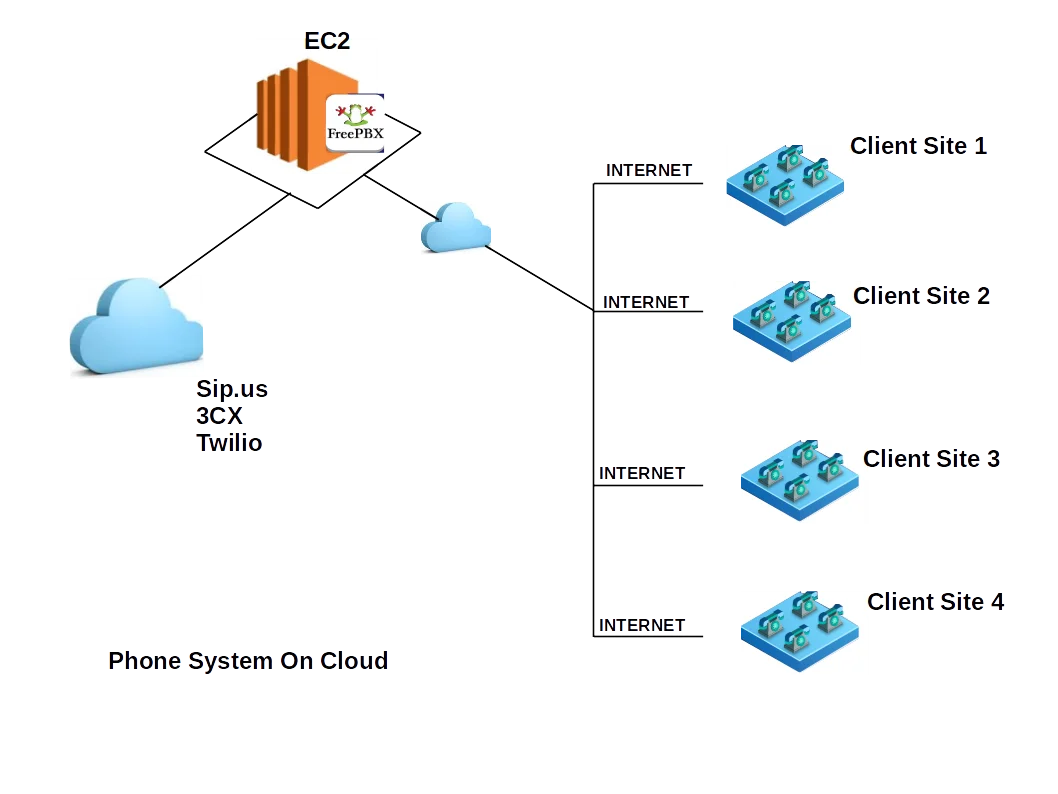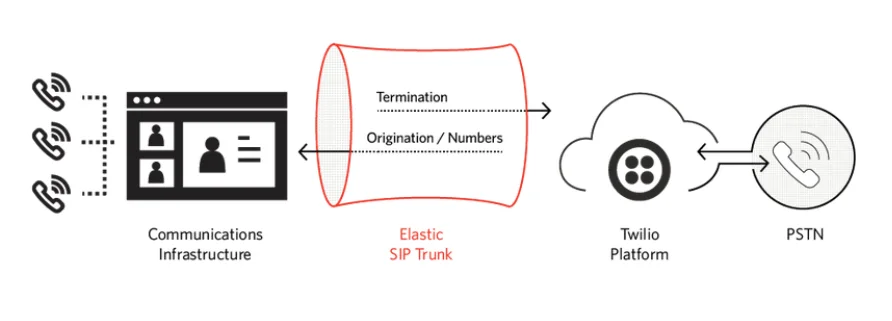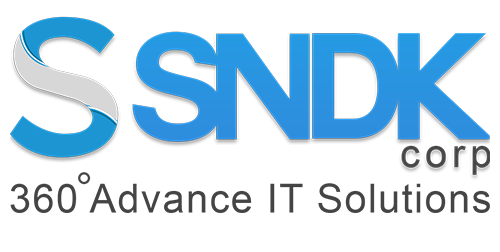Blog
Case Study: FreePBX – A PHONE SYSTEM ON CLOUD
Requirement
For a Business growing with ‘n’ no of warehouses, Restaurants, Offices setup in multilocation like Melbourne, Colorado, Texas, and Canada, it is mission-critical to keep everyone connected through seamless communication. As the Business continued to grow and expand, the need for new communication systems increased enormously. Now, we have a goal of connecting all warehouses, Restaurants, Offices setup in multilocation without any communication gap. However, the team is spread across 4 locations globally with opportunities to boost productivity.
Business Challenges
Our technical department encountered a situation where they had to deploy phones in an area where the dedicated (traditional) voice cabling needed to connect. The phones could not be set up unless they found an alternate PBX system to which the phones could be connected. The tech team needed a quick solution that would let them complete this deployment and get the phone system working.
The main challenges were:
Time-sensitivity
The need to deploy a perfectly functional phone system.
Flexibility
They needed a high-quality, reputable, and dependable PBX system to which could connect the new phones to the existing network.
Cost
While handing the best solution in the quickest possible time, they still had a budget they needed to work within.
Efficiency
The team had to find a solution that increased the overall productivity of the telecommunication network and saved costs in the long run.
Solution
“FreePBX with Twilio Integration on the cloud.”
It is a web-based open-source GUI (graphical user interface) that controls and manages Asterisk (PBX), an open-source communication server. FreePBX is licensed under the GNU General Public License (GPL), an open-source license. FreePBX can be installed manually or as part of the pre-configured FreePBX Distro that includes the system OS, Asterisk, FreePBX GUI and assorted dependencies.
Twilio is a cloud communications platform as a service (CPaaS) company based in San Francisco, California. It allows us to make and receive phone calls, send, and receive text messages, and perform other communication functions using its web service APIs. Moreover, Twilio is a SIP Number provider; we use it in our organization.
Twilio API Integration provides various features:
Web / Mobile programmers can easily use communication protocols within the app using REST APIs Multilanguage support system, Toll-Free Numbers for API users which can be used for support system development, Pay per Usage bill services, TWiML Markup language is straightforward to use for implementing entire Twilio, Infrastructure for any project development. These are various things which can be done using Twilio API integration.
Make & Receive Phone calls, Text to Speech, Conference Calls, Video Calls
Implementation
We have deployed a PBX as a single server in AWS EC2 to connect all phones of multilocation. More than 100 phones are connected to a single server. A unique phone number is used to create all the extensions. The phone system came with pre-loaded FreePBX distro, compelling hardware features and a comprehensive warranty. Out of the box, the order came with a string of FREE features ready to use.
These included business features like calling queues, Interactive Voice Response (IVR), ring groups, music on hold, voicemail blasting, wake up calls, announcements, etc. all crucial for a University telecommunication network. The system also offered to call features like three-way calling support, caller ID support, call recording, do not disturb, call history, call blacklisting, call screening, etc.

Configure Twilio Elastic SIP Trunking with FreePBX
Twilio Elastic SIP Trunking is used to connect your IP-based communications infrastructure to the publicly switched telephone network (PSTN. With it,, we can start making and receiving telephone calls to the ‘rest of the world’ via any broadband public internet or private connection. Twilio users often hook Elastic SIP to FreePBX, a web-based GUI with an underlying Asterisk-based PBX.

We must define Termination URI for Outgoing calls in our FreePBX server. This URI will be used in Trunk setting of FreePBX. You can set available URI in Twilio, and for authentication, we will use two things in Twilio; IP access control list where we define which IP can use this URI for outgoing calls and another one is Credential list where we set username and password which will be used to connect for Trunk connection.
We have to setup Origination URI to accept trunk connection from our FreePBX server. We need Live IP of our FreePBX server to set Origination URI. This is where we can define who can connect with the Twilio.
- To make a call and receive a call, we have to set up inbound and outgoing routes on FreePBX.
- Before creating inbound and outbound routes, we need to create Trunk First in FreePBX
- In Inbound Route: we have to give DID number that we have purchased from Twilio and set a destination as any extension or IVR for land that calls on.
- In Outbound Routes: we need to select Trunk under “Trunk sequence for matched Routes” what we have created before. Also, we need to define dial patterns for the outgoing call. Dial pattern is how you dial a number that matches with patterns you specify here will be routed from this outbound route.
Also, Read Our Previous Post
5 Things to know about AWS CloudFront
CONCLUSION
One of the most significant benefits of installing a free open source PBX phone system is that it can double as an extra employee when you need it. These systems have been continuously advanced over time for a more personal feel. They can warmly greet customers when they first call up and efficiently route them to the appropriate department.
A PBX system from free, open-source software can save businesses quite a bit of money and make their internal and external communications much more efficient. And if you work with the right system, you can easily add modules to allow video conferencing, call recording for customer quality, and many other web-connected goodies.
No more are phones just limited to voice calls on one stationary phone. Staff can quickly transfer a call from a desk phone to a mobile, invite other team members to a video conference with a mouse-click, and of course, keep everyone connected. And all for much less than businesses used to have to pay for an office phone system To understand more, you can connect with one of our AWS or FreePBX cloud consultants at SNDK Corp.
